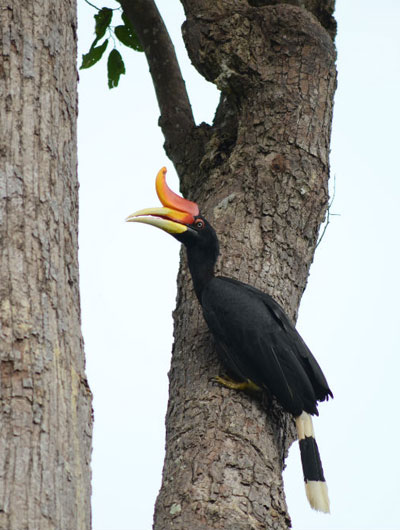 There are at least 55 species of nest-sealing hornbills, plus another two species that are classified as ground hornbills, making a total of 57 hornbill species in the world. Hornbills are found in various habitats across sub-Saharan Africa and Asia, from savanna grasslands to tropical evergreen forests. They are not to be confused with the large-billed toucans of South America, which are a type of barbet.
There are at least 55 species of nest-sealing hornbills, plus another two species that are classified as ground hornbills, making a total of 57 hornbill species in the world. Hornbills are found in various habitats across sub-Saharan Africa and Asia, from savanna grasslands to tropical evergreen forests. They are not to be confused with the large-billed toucans of South America, which are a type of barbet.
Tropical areas of Asia provide habitats for 32 species of hornbills , of which 13 species are found in Thailand.
Hornbills are ancient-looking birds that have been roaming the earth for more than 50 million years. Their feathers are mostly black and white, but for a few species that are brown or gray. The reason some species appear more colorful than others, is because of the brighter colors on the naked skin around their neck, and especially, on their face and around their eyes.
However, the bright yellow color seen on the feathers around their necks and on the long curved bills and the casques of the Great Hornbill, the Rhinoceros Hornbill and the Helmeted Hornbill comes from an oily substance that the bird applies itself. In other words, these birds make
use of their own ‘cosmetics’ formed from oils secreted from the preen gland located at the base of the tail.
The bird applies this oil to its feathers to keep the feathers supple and strong, like the way people apply lotions to their hair.